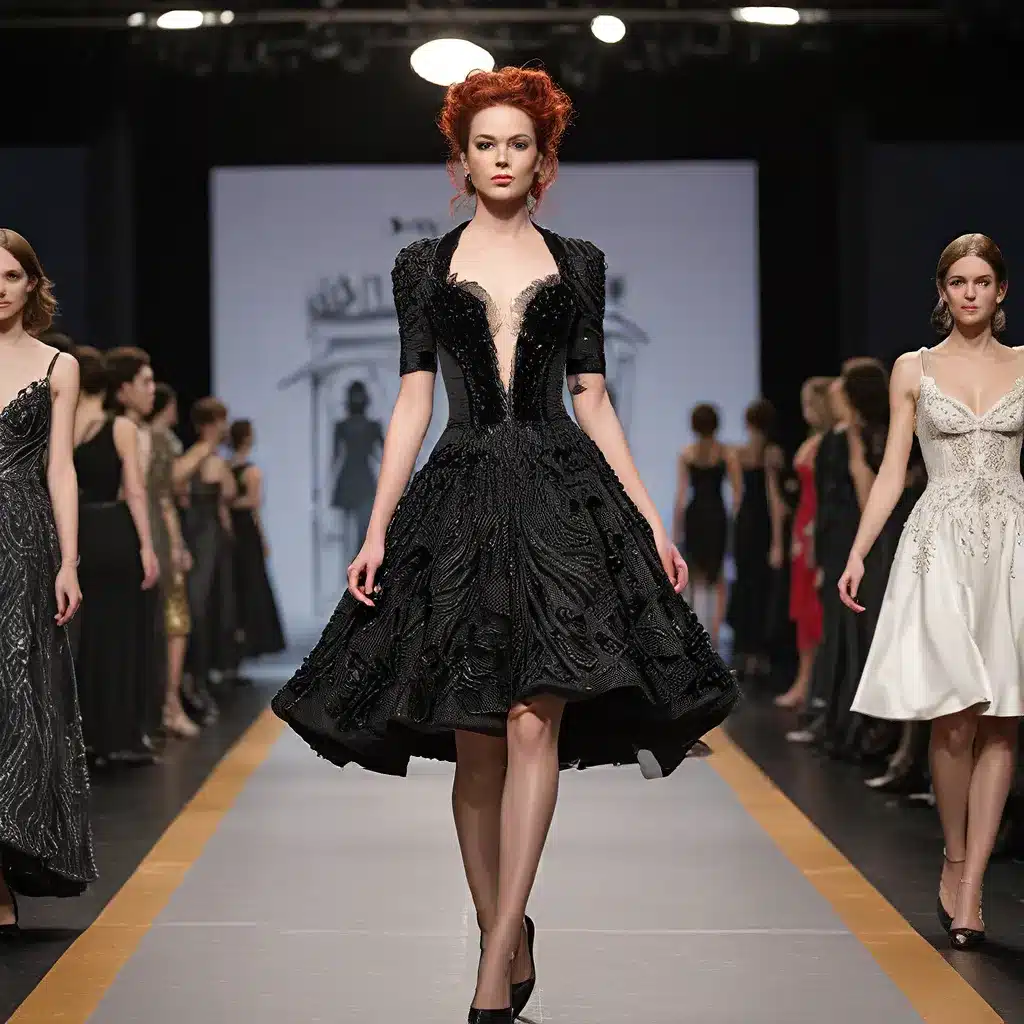
Bringing Runway Glamour to the Stage
Have you ever wondered how the stunning costumes in your favorite Broadway musicals come to life? As an avid fan of musical theatre, I’ve always been mesmerized by the intricate, eye-catching designs that transport us to different eras and settings. And as it turns out, the inspiration behind these breathtaking creations often comes straight from the world of high fashion.
Recently, I had the chance to chat with renowned costume designer Catherine Zuber, the creative force behind the costumes for the Broadway sensation “Moulin Rouge.” Zuber shared how she drew inspiration from the runways of Paris and Milan, infusing the show’s costumes with the bold, avant-garde flair of designers like John Paul Gaultier, Alexander McQueen, and Thierry Mugler.
Melding Past and Present
As Zuber explained, the challenge with “Moulin Rouge” was to create costumes that were rooted in the Belle Époque era, while still appealing to a modern audience. “They needed to be a kind of melange of period but appealing to a modern eye,” she told me. “I worked with director Alex Timbers on creating something rooted in a particular time period but that honored the storytelling and music and that created a vocabulary in its own world.”
This delicate balance between historical authenticity and contemporary flair is something Zuber has honed over the course of her illustrious career. She’s no stranger to taking on massive projects with intricate costume requirements, from the lush, period-perfect looks of “The King and I” to the sleek, modern aesthetic of “My Fair Lady.” But with “Moulin Rouge,” she had the opportunity to truly push the boundaries, blending vintage glamour with cutting-edge couture.
Corsets and Crystals and Sequins, Oh My!
One of the standout costume elements in “Moulin Rouge” is the custom-made corsetry worn by the Moulin Rouge dancers. As Zuber explained, these pieces required an incredible level of precision and attention to detail. “The fitting has to be so precise and then for us there’s the added challenge of movement. We had to pay special attention to where the boning is, where it isn’t, where the support is, where we put stretch, where we don’t put anything,” she said. “Each piece is fit to such precision. It was quite demanding but incredibly satisfying in the end.”
But the corsets were just the beginning. The costumes in “Moulin Rouge” are a veritable feast for the senses, with sequins, crystals, and bold colors galore. Zuber drew inspiration from the extravagant, attention-grabbing designs of the Moulin Rouge’s original cabaret setting, as well as the opulent fashions of Paris’ elite. “There’s a scene where suddenly we’re in wealthy Paris – and those costumes the rich people were wearing in mauve and pale pink tones, a lot of that was taken from the Dior collection from 2006,” she revealed.
Bringing the Runway to Life
Of course, translating these high-fashion runway looks to the stage comes with its own unique set of challenges. As costume designer Isabel Toledo explained, an item of clothing for the stage needs to be able to withstand being worn and washed eight times a week, all while maintaining its structural integrity through the demands of intense choreography.
“To see one of my gowns dance through the air and then do a split and bounce back and look gorgeous is a real thrill,” Toledo said. And that’s exactly what the costume team at Musical Theatre Center works to achieve with every production. They understand that the costumes are not just a backdrop, but an integral part of the storytelling process.
Runway to Reality: Practical Costume Design Tips
So, what does it take to translate runway-inspired designs into stage-worthy costumes? Here are a few key tips from the experts:
-
Prioritize Functionality: While glamour is essential, the costumes must also be comfortable and allow for freedom of movement. Striking the right balance between form and function is crucial.
-
Embrace Unconventional Materials: Designers aren’t limited to traditional fabrics. Exploring innovative textiles, like engineered mesh or even unexpected found objects, can create truly unique and eye-catching effects.
-
Pay Attention to Details: The devil is in the details when it comes to costume design. From boning placement to strategic use of embellishments, every element must be carefully considered.
-
Collaborate Closely: Costume designers don’t work in a vacuum. Fostering strong relationships with the director, choreographer, and other creative team members is essential for bringing the overall vision to life.
-
Embrace the Unexpected: Sometimes the most inspired costume choices come from happy accidents or serendipitous discoveries. Keeping an open mind and being willing to pivot can lead to truly innovative results.
The Runway Meets the Stage
As I’ve delved deeper into the world of musical theatre costume design, I’ve come to appreciate the incredible artistry and dedication that goes into every single piece. These aren’t just outfits – they’re essential tools in the storyteller’s toolkit, transporting audiences to different worlds and helping to bring characters to life in unforgettable ways.
And with designers like Catherine Zuber and Isabel Toledo continuing to push the boundaries of what’s possible, the future of costume design for the stage is looking brighter and more fashion-forward than ever. So the next time you find yourself marveling at the stunning costumes in your favorite musical, just remember – the runway may have been the starting point, but the stage is where the true magic happens.

